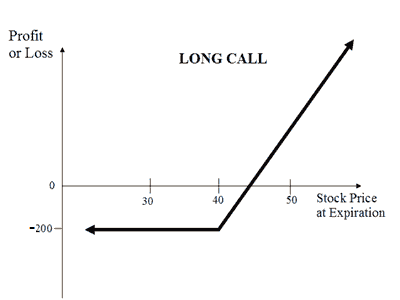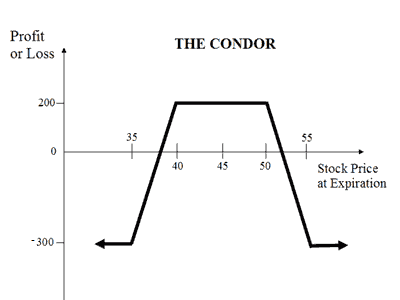 Zerodha (Trading Account)
Zerodha (Trading Account)
FREE Equity Delivery and MF
Flat ₹20/trade Intra-day/F&O
 Zerodha (Trading Account)
Zerodha (Trading Account)
FREE Equity Delivery and MF
Flat ₹20/trade Intra-day/F&O

|
|
Compare Long Call and Long Condor (Long Call Condor) options trading strategies. Find similarities and differences between Long Call and Long Condor (Long Call Condor) strategies. Find the best options trading strategy for your trading needs.
| Long Call | Long Condor (Long Call Condor) | |
|---|---|---|
 |
 |
|
| About Strategy | A Long Call Option trading strategy is one of the basic strategies. In this strategy, a trader is Bullish in his market view and expects the market to rise in near future. The strategy involves taking a single position of buying a Call Option (either ITM, ATM or OTM). This strategy has limited risk (max loss is premium paid) and unlimited profit potential. When the trader goes long on call, the trader buys a Call Option and later sells it to earn profits if the price of the underlying asset goes up. When the trader buys a call, he pays the option premium in exchange for the right (but not the obligation) to buy share or index at a fixed price by a certain expiry date. This premium is the only amount at-the-risk for trader in case the mark... Read More | A Long Call Condor is a neutral market view strategy with a limited risk and a limited profit. The long call condor investor is looking for little or no movement in the underlying. It is a 4 leg strategy which involves buying 2 ITM Calls and 2 OTM Calls at different strike price with the same expiry date. The strategy is similar as long butterfly strategy with the difference being in the strike prices selected. Suppose Nifty is currently trading at 10,400. The long call condor strategy can be used if expect very little volatility in the index and market to largely remain range bound. To profit in such a market scenario lets: Long Call Condor Options Strategy OrdersExample NIFTY Strike Price Buy 1 ITM CallNIFTY18APR10200C... Read More |
| Market View | Bullish | Neutral |
| Strategy Level | Beginners | Advance |
| Options Type | Call | Call |
| Number of Positions | 1 | 4 |
| Risk Profile | Limited | Limited |
| Reward Profile | Unlimited | Limited |
| Breakeven Point | Strike Price + Premium | |
| Long Call | Long Condor (Long Call Condor) | |
|---|---|---|
| When to use? | A long call Option strategy works well when you expect the underlying instrument to move positively in the recent future. If you expect XYZ company to do well in near future then you can buy Call Options of the company. You will earn the profit if the price of the company shares closes above the Strike Price on the expiry date. However, if underlying shares don't do well and move downwards on expiry date you will incur losses (i.e. lose premium paid). |
The Long Call Condor works well when you expect the price of the underlying to be range bound in the coming days. In other words, when the trader is anticipating minimal price movement in the underlying during the lifetime of the options. |
| Market View | Bullish When you're expecting a rise in the price of the underlying and increase in volatility. |
Neutral When you are unsure about the direction in the movement in the price of the underlying but are expecting little volatility in it in the near future. |
| Action |
A long call strategy involves buying a call option only. So if you expect Reliance to do well in near future then you can buy Call Options of Reliance. You will earn a profit if the price of Reliance shares closes above the Strike price on the expiry date. However, if Reliance shares don't move up within the expiry date you will incur losses. |
Suppose Nifty is currently trading at 10,400. You expect little volatility in the index and market to largely remain range bound. To profit in such a market scenario, you can buy buy 1 ITM Nifty Call Option at 10,200, sells 1 ITM Nifty Call Option 10,300, sell 1 OTM Call Option at 10,500 and buy 1 OTM Nifty Call Option at 10,800. The Net debit of premium is the maximum possible loss while your maximum profit will be when Nifty is between the strike prices of 2 short calls on expiry. |
| Breakeven Point | Strike Price + Premium The break-even point for Long Call strategy is the sum of the strike price and premium paid. Traders earn profits if the price of the underlying asset moves above the break-even point. Traders loose premium if the price of the underlying asset falls below the break-even point. |
There are 2 break even points in this strategy. The upper break even is hit when the underlying price is equal to the difference between higher strike price and net premium paid. The lower break even is hit when the underlying price is equal to the total of lower strike price and net premium paid. Lower Breakeven = Lower Strike Price + Net Premium Upper breakeven = Higher Strike Price - Net Premium |
| Long Call | Long Condor (Long Call Condor) | |
|---|---|---|
| Risks | Limited The risk is limited to the premium paid for the call option irrespective of the price of the underlying on the expiration date.
|
Limited The maximum risk in a long call condor strategy is equal to the net premium paid at the time of entering the trade. The max risk is when the price of the underlying equal to or below the lower strike price or when the underlying price is equal to or above the higher strike price of Options in trade at expiration time. |
| Rewards | Unlimited There is no limit to maximum profit attainable in the long call option strategy. The trade gets profitable when price of the underlying is greater than strike price plus premium.
|
Limited The maximum profit in a long call condor strategy is realized when the price of the underlying is trading between the two middle strikes at time of expiration. |
| Maximum Profit Scenario | Underlying closes above the strike price on expiry. |
Both ITM Calls exercised Max Profit = Strike Price of Lower Strike Short Call - Strike Price of Lower Strike Long Call - Net Premium Paid |
| Maximum Loss Scenario | Underlying closes below the strike price on expiry. |
All Options exercised or not exercised Max Loss = Net Premium Paid |
| Long Call | Long Condor (Long Call Condor) | |
|---|---|---|
| Advantages | Buying a Call Option instead of the underlying allows you to gain more profits by investing less and limiting your losses to minimum. |
It allows you to profit from range bound underlying at low capital. The profit is high with limited risk exposure. The maximum profit for the condor trade may be low in relation to other trading strategies but it has a comparatively wider profit zone. |
| Disadvantage | Call options have a limited lifespan. So, in case the price of your underlying stock is not higher than the strike price before the expiry date, the call option will expire worthlessly and you will lose the premium paid. |
Strike prices selected may have an impact on the potential of profit. Brokerage and taxes makes a significant impact on the profits from this strategy. The cost of trading increases with number of legs. This strategy has 4 legs and thus the brokerage cost is higher. |
| Simillar Strategies | Protective Put, Covered Put/Married Put, Bull Call Spread | Long Put Butterfly, Short Call Condor, Short Strangle |


FREE Intraday Trading (Eq, F&O)
Flat ₹20 Per Trade in F&O
|
|